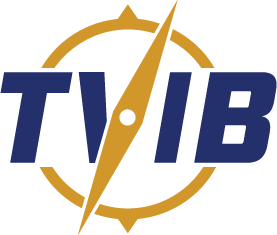With the recent update to the U.S. Coast Guard’s CG-2692 form (scroll down for download links)—Report of Marine Casualty, Commercial Diving Casualty, or OCS-Related Casualty—towing vessel operators must understand the difference between reporting a marine casualty and submitting this form. Timely notification and documentation are key to regulatory compliance and safety.
✅ When to Report a Marine Casualty
You must immediately notify the nearest Coast Guard Sector Office (after addressing any safety concerns) when your vessel is involved in any of the following events—even if you are unsure whether it meets the threshold of a reportable marine casualty:
- Any fall overboard, injury, or loss of life
- An unintended grounding or unintended allision with a bridge
- Flooding, collision, explosion, or fire
- Loss or reduction of propulsion, steering, or electrical power
- Any condition that adversely affects the vessel’s seaworthiness or fitness for route/service
- Actual or potential environmental harm (e.g., oil spill)
Refer to Navigation and Vessel Inspection Circular (NVIC) 01-15, “Reporting Marine Casualties,” for additional guidance on the types of events that constitute reportable marine casualties and examples that clarify borderline situations.
📄 When to Submit CG-2692 Forms
A CG-2692 form is submitted only after a Qualified Investigating Officer (IO) (NVIC 01-15) determines that the occurrence is a reportable marine casualty under 46 CFR Part 4. In many cases, your initial verbal or electronic report to the Coast Guard will trigger that evaluation.
Submit CG-2692 if:
- The Coast Guard has confirmed the incident is a reportable marine casualty
- The event qualifies as a Serious Marine Incident (SMI):
- A death or serious injury
- Property damage in excess of $200,000
- Discharge of oil or hazardous materials
- Your tow (barge) sustains or causes damage
- Chemical testing is required – Form CG-2692B must accompany the main CG-2692
Note: You are still required to notify the Coast Guard immediately, even if you are not yet certain whether an incident is reportable. NVIC 01-15 includes helpful examples that clarify the Coast Guard’s interpretation of “immediate” notification and what constitutes a reportable event.
⏰ Reporting & Submission Timeline
- Report to the Coast Guard immediately after ensuring safety
- If determined reportable, submit CG-2692 within 5 days of the incident
📝 Check Your TSMS for Company-Specific Reporting
If operating under a Towing Safety Management System (TSMS) for Subchapter M compliance, your TSMS may include additional internal requirements such as:
- Internal notification procedures
- Company-specific reporting timelines
- Documentation and follow-up expectations
Review your TSMS regularly to ensure alignment with both Coast Guard and internal expectations.
⚠️ Why This Matters
Accurate and timely reporting enables the Coast Guard to:
- Investigate incidents
- Enforce safety regulations
- Prevent future casualties
Failure to comply can lead to enforcement action, including fines or suspension of operations.
🔑 Key Takeaway
Know the difference between notifying the Coast Guard and submitting a CG-2692. Always review NVIC 01-15 and your company’s TSMS for detailed reporting expectations. Clear communication and proper documentation protect your crew, your vessel, and your company.
📎 Download Links
